Rainy afternoon in Xi’an. We walked along Muslim Street and its labyrinthine by-lanes. One can call the main street, a Foodie’s delight — more so for the carnivorous homo sapiens. Vegetarians can look the other way. Rows and rows of shops and stalls selling food items comprising various types of meat and seafood. The second prominent edible items on display were sweetmeats of the local kind including cold desserts. Despite the rain, tourists and locals alike were gorging on the food, even as we moved along to the by-lanes with shops selling souvenirs, gift-items, scarves, vases, toys, handicrafts and what not. Bargaining is the name of the game here. Whatever price the shopkeeper quotes ( by displaying the figure on a calculator), one has to ask a price 40-50% of that quoted. The exchanges were interesting, a little time-consuming but we landed some very good bargain deals.
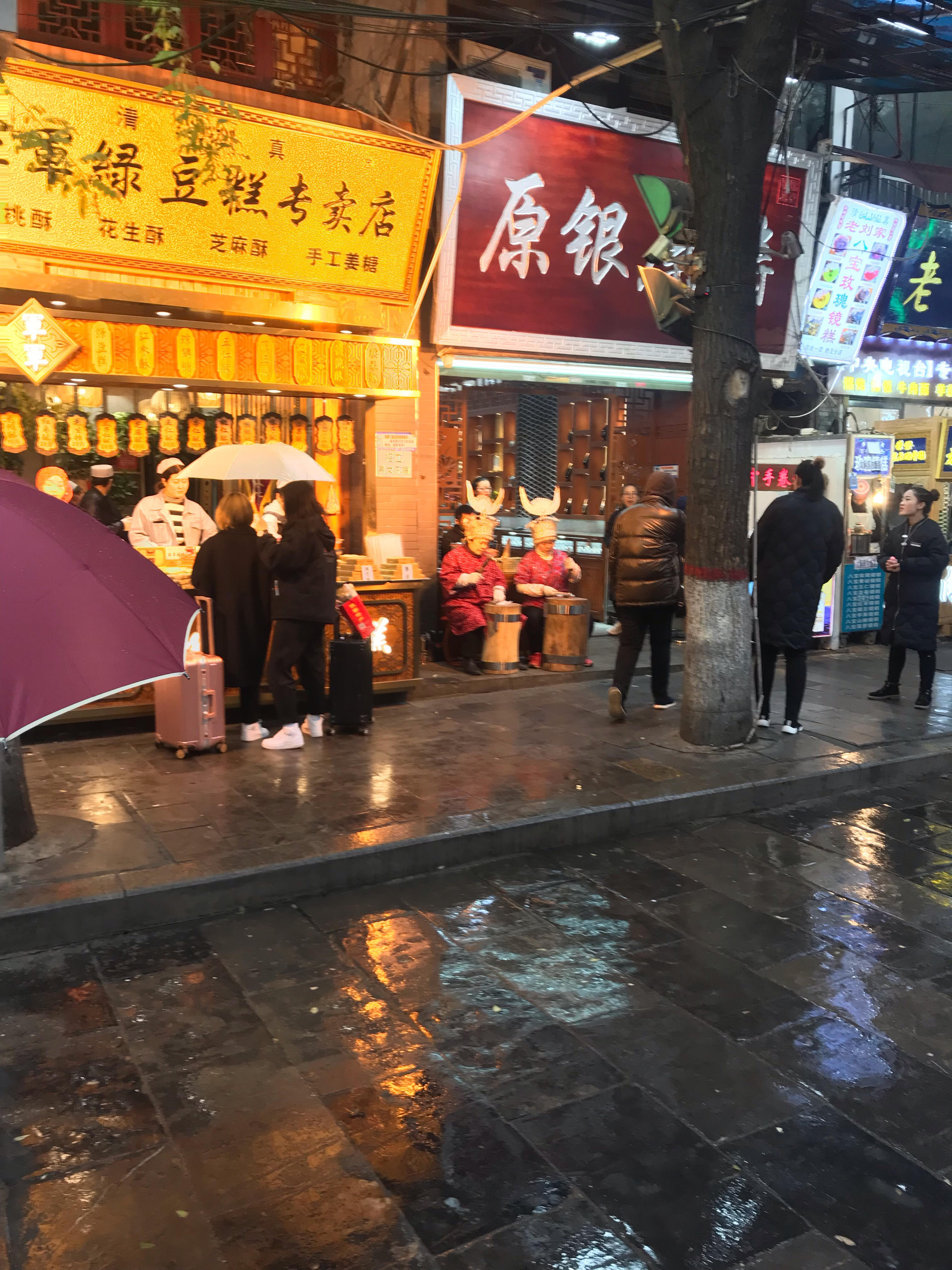

We noticed that many people walking on the street as also shopkeepers had the Mongoloid facial features of the Chinese, spoke Mandarin but sported skull caps, worn by Muslims. Some of the women shopkeepers too wore those long veils and had their heads covered. Our guide Peter explained that Xi’an was the starting point for the ancient Silk Route. Many Arabs, Persians, Afghans and other muslims came here for trade, married local Chinese girls and settled down,around this area for generations. Though they speak Mandarin only they are pious followers of Islam. The Chinese Emperors too recognized the contribution of these Chinese muslims and helped them set up a place of worship in this area — The Great Mosque, which was our next port of call.
The first thing you realize when you are in The Great Mosque is that there are no tombs or minarets, which are features of any mosque. This mosque has the Chinese architectural style, but mind you, even today regular prayers are offered in the Prayer Hall. The mosque has 4 courtyards and as we enter we see tablets with the Emperor’s seal on them. Stated to have been originally built in the 7th century AD during the Tang dynasty, what remains today is the much improved, renovated version, with the major improvements having been carried out during the rule of the Mings.
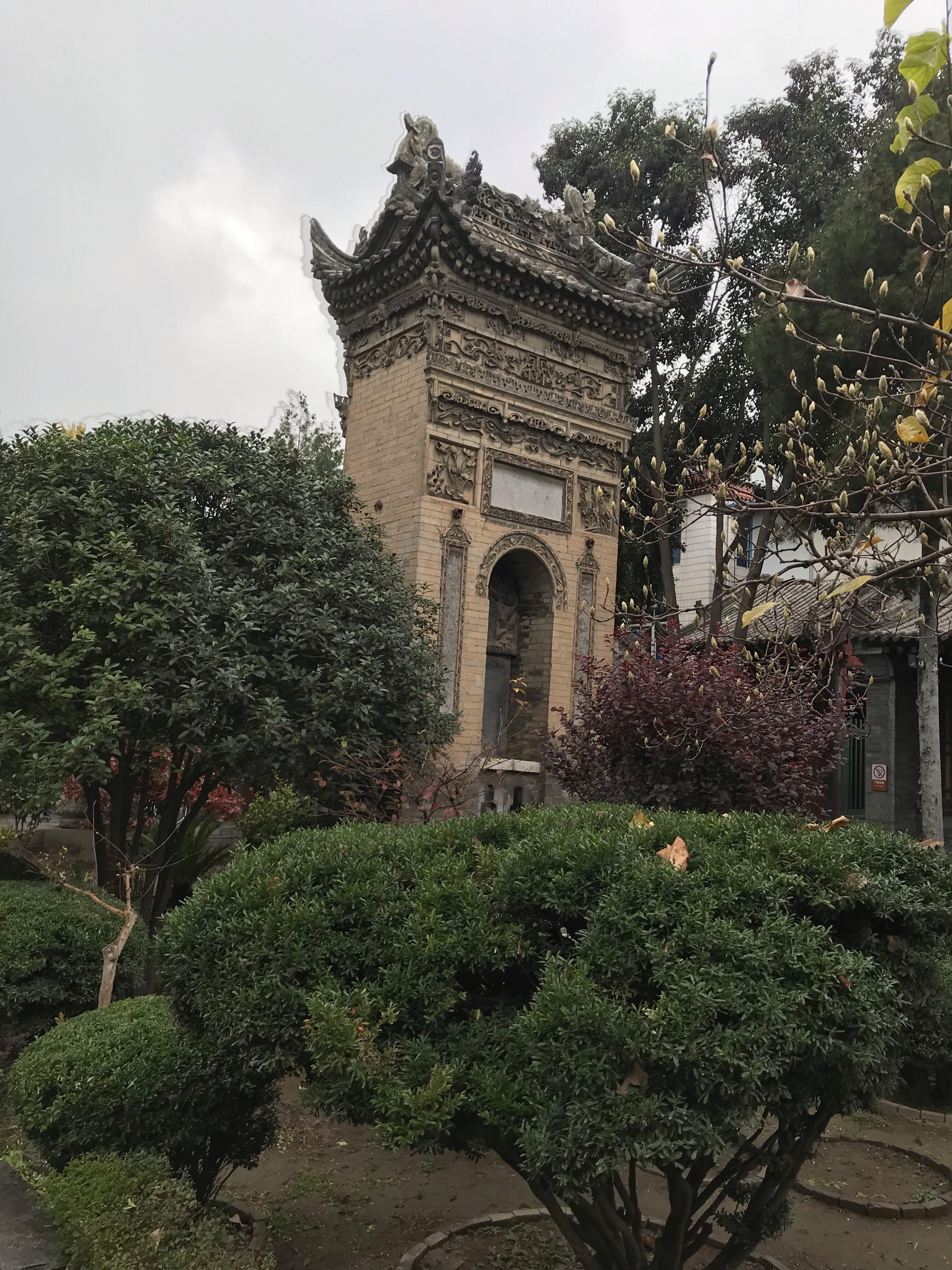
As we moved in further amidst lush greenery to the third courtyard, coming in view was the tower from which the muezzin called the faithful to pray. It served the purpose of a minaret and was called the Xingxin Tower or the Retrospection Tower
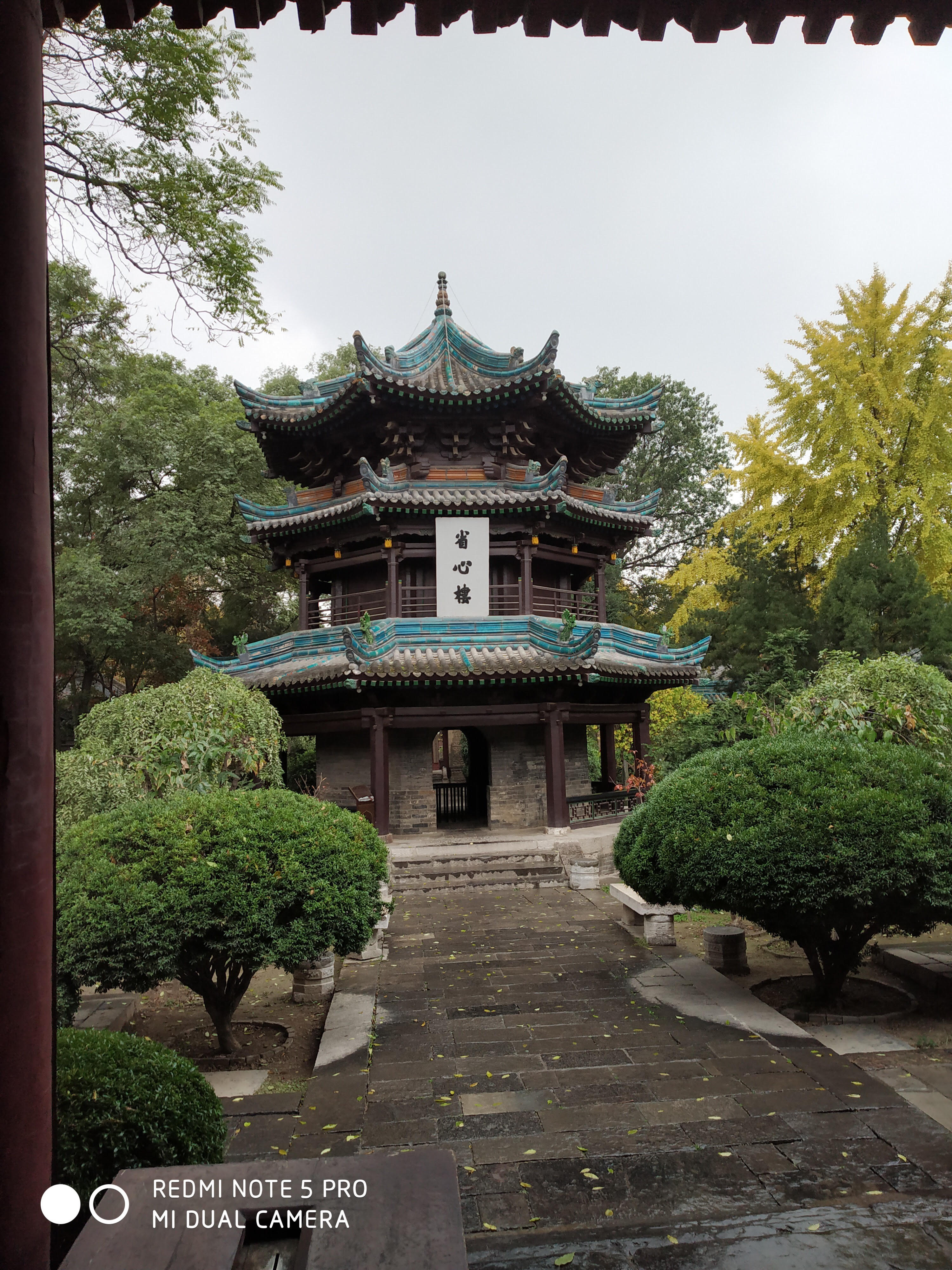
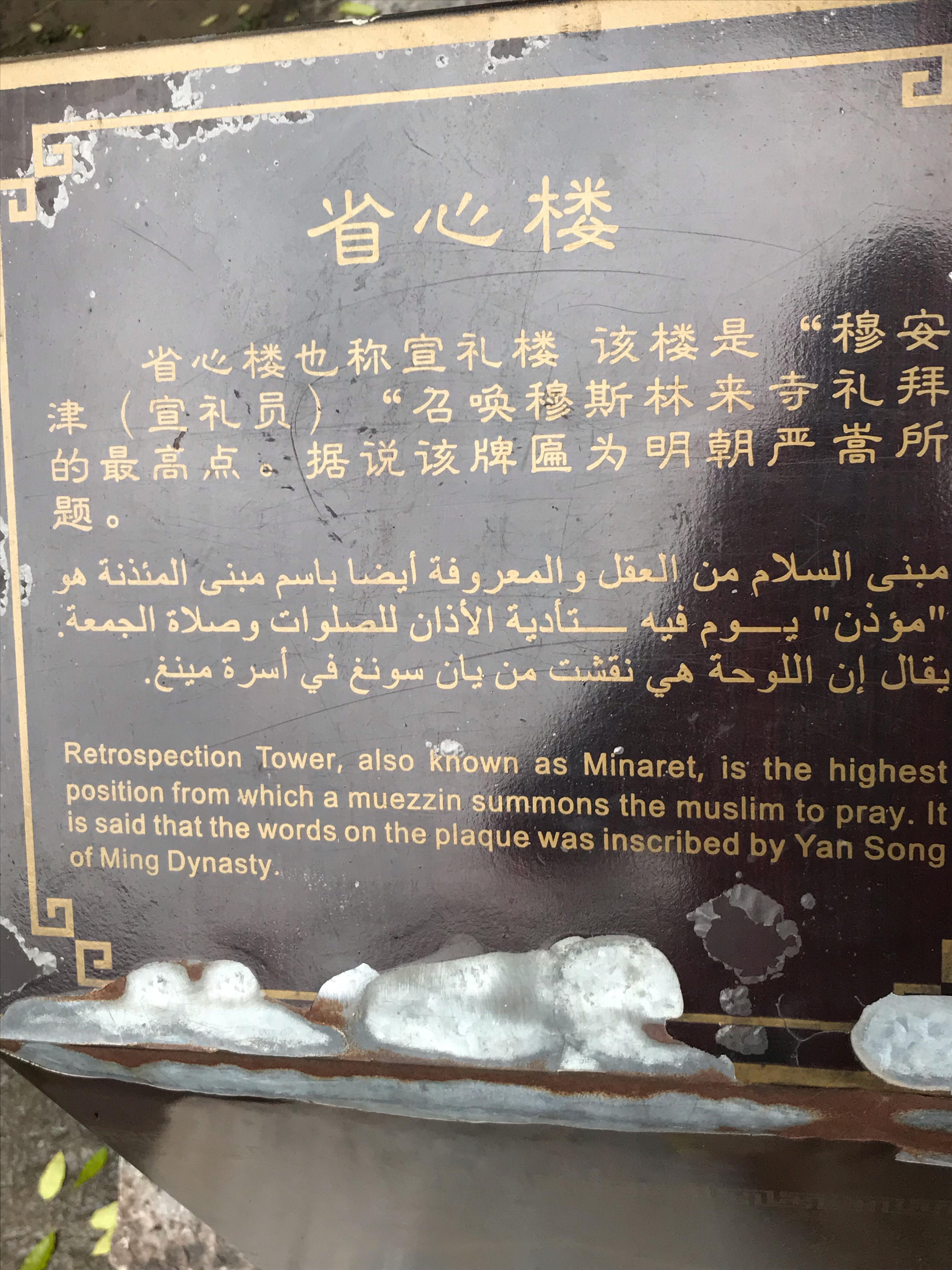
Now we were in the fourth courtyard where there is a pavilion shaped like a Phoenix with its wings spread and fittingly enough it is named The Phoenix Pavilion.
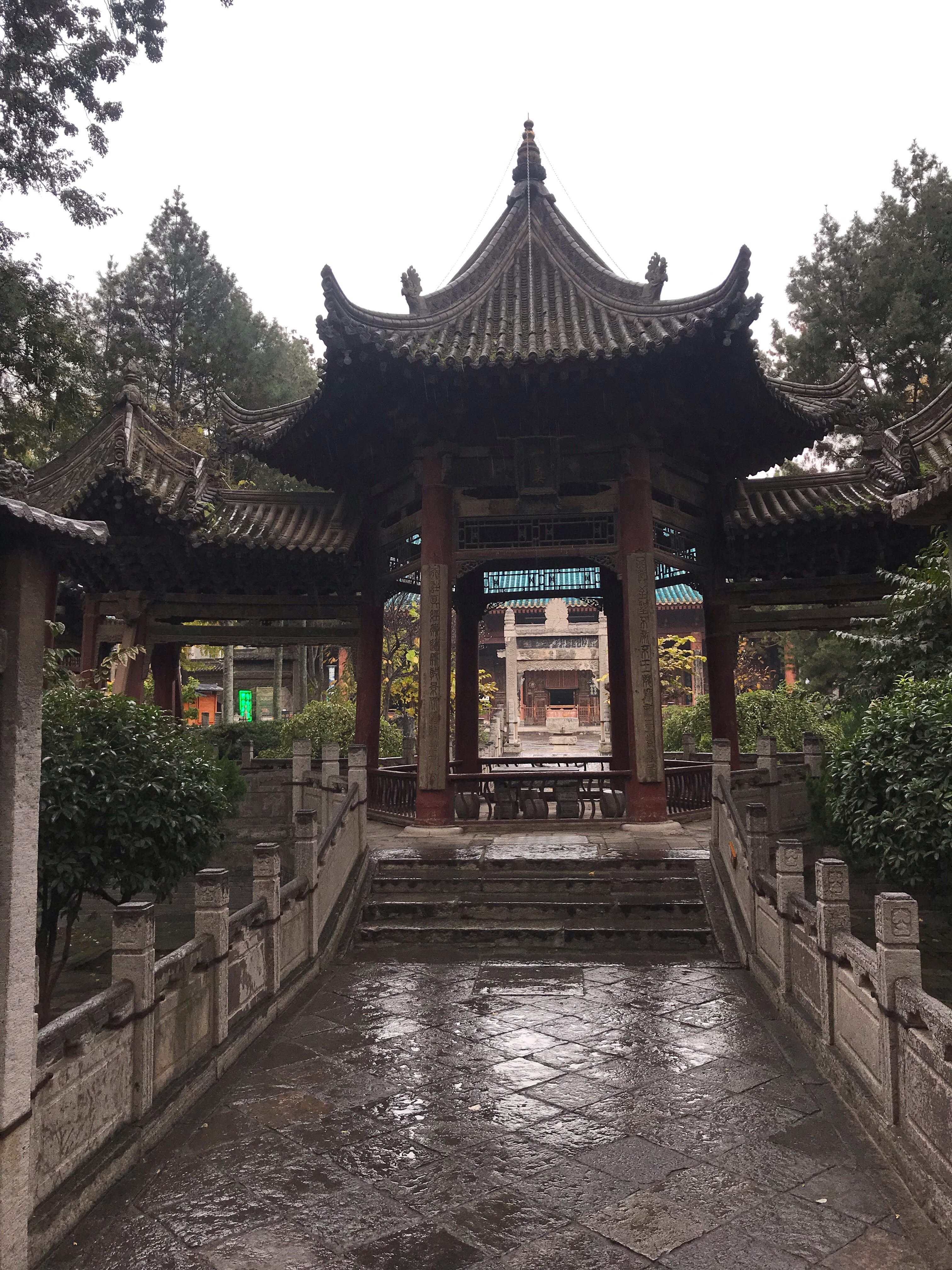
Beyond lies the main prayer hall which is used to this day. At the entrance to the hall there is a huge vase and also a clock showing the different prayer times during the course of a day.
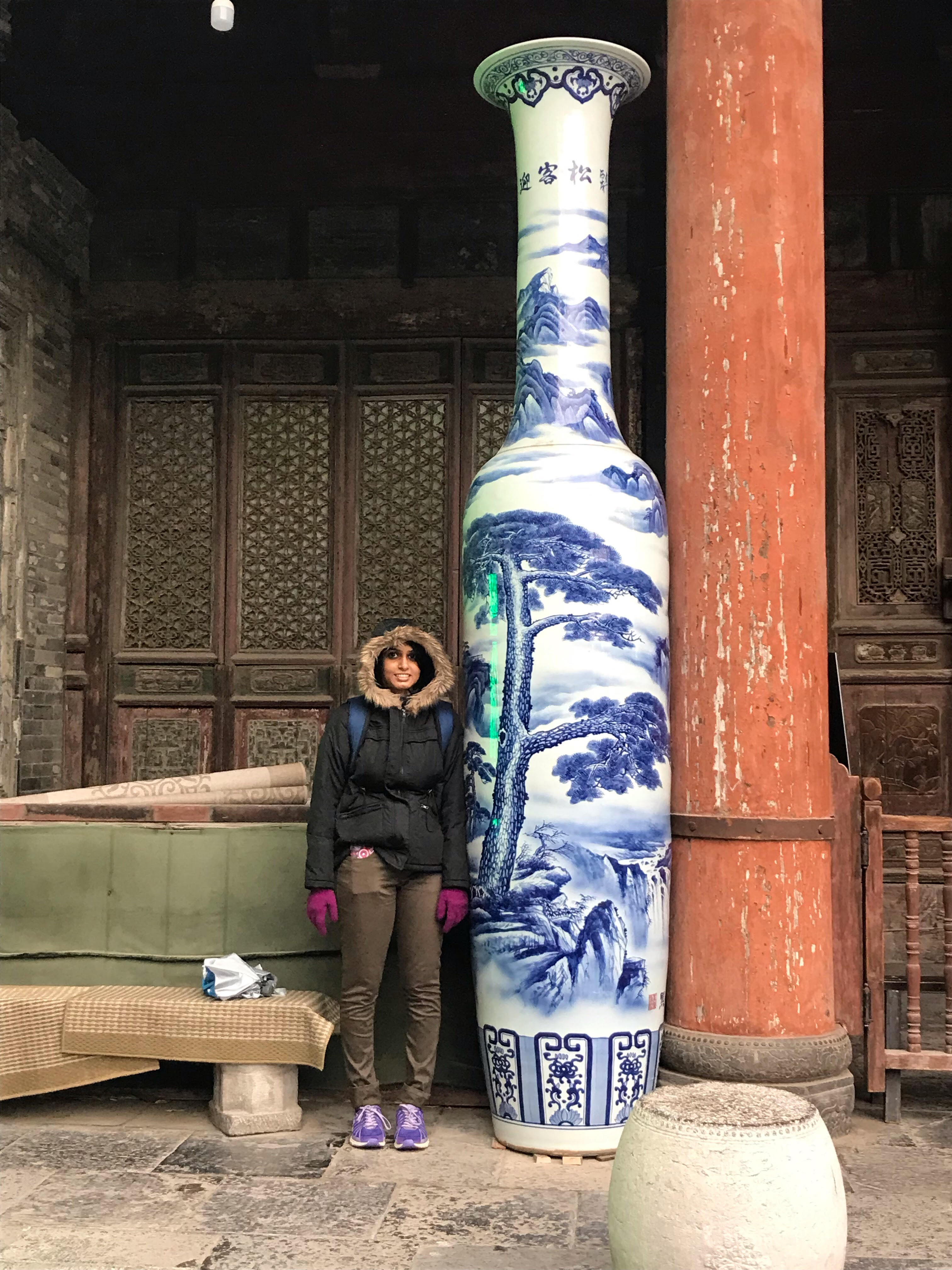
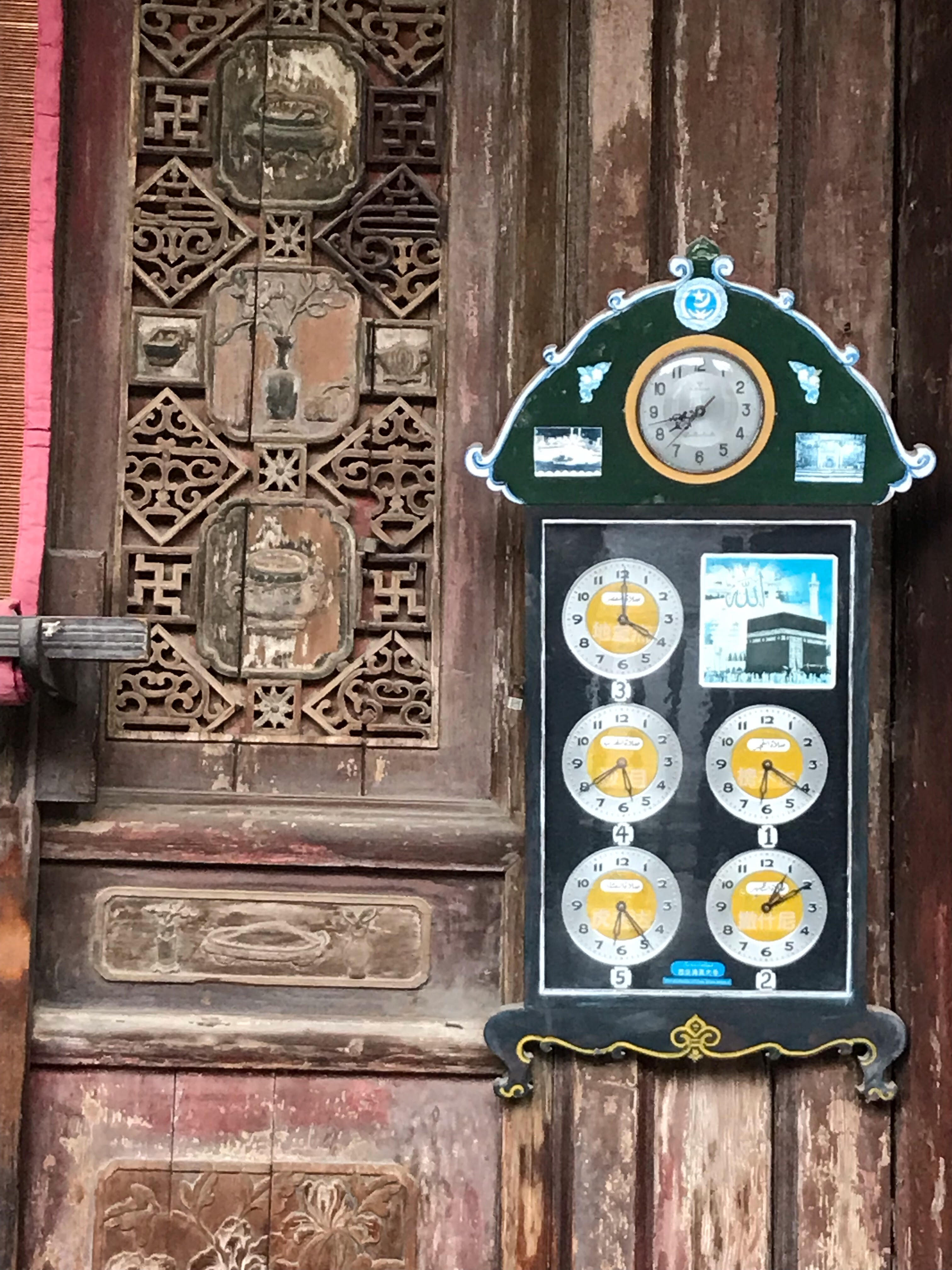
We were inside the walled city, explained Peter and now were off to see the wall at close quarters. Walled city? Unlike other cities/towns, where the walled portion houses the old city quarters, Xi’an is a tad different. While care has been taken to preserve the old monuments and places of interest ( The Great Mosque, Drum Tower, Muslim Street,etc.), alongside we find swanky offices, malls and broad roads. We walk a while and enter an underpass or subway for pedestrians, which has images of all dignitaries who visited the Xi’an City Wall. Happy to see our Prime Minister Narendra Modi’s picture there.
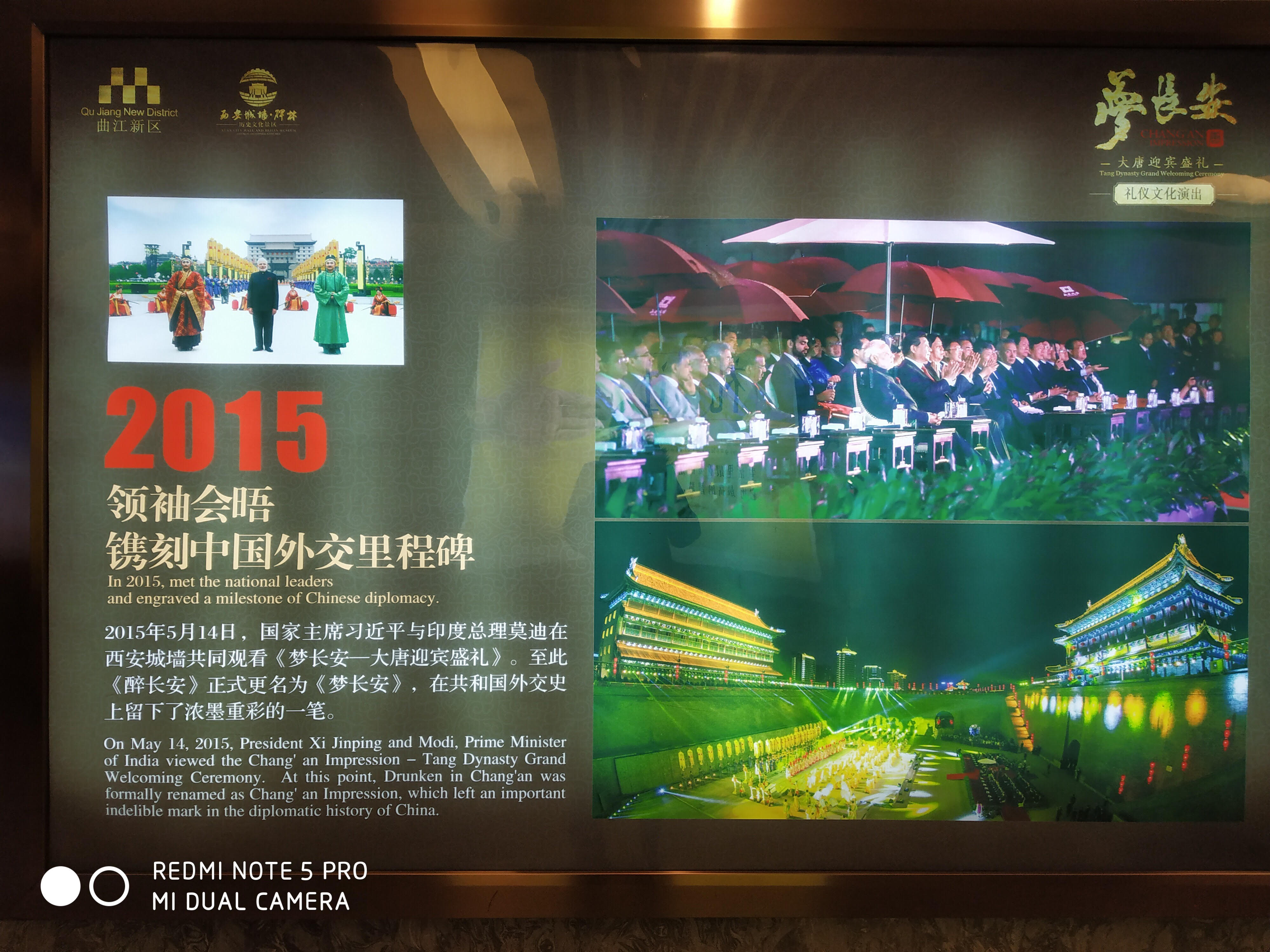
Tickets purchased, we were soon climbing the steps up to the Wall from within the walled city. Externally, there are 4 main gates to the walled city & 18 small gates too for road traffic now. This is one of the best preserved and restored city walls, anywhere in the world. A City Wall Garden around the entire periphery of the Wall has been set up in the eighties. Remember,The Great Wall of China stretched for thousands of kilometers along all types of terrain to protect the kingdom from marauders. The Xi’an City Wall, on the other hand was built to protect the city within. Stretching for around 14 kilometers in a rectangular form, the wall is much broader than the Great Wall and also on even ground with paved stone blocks.
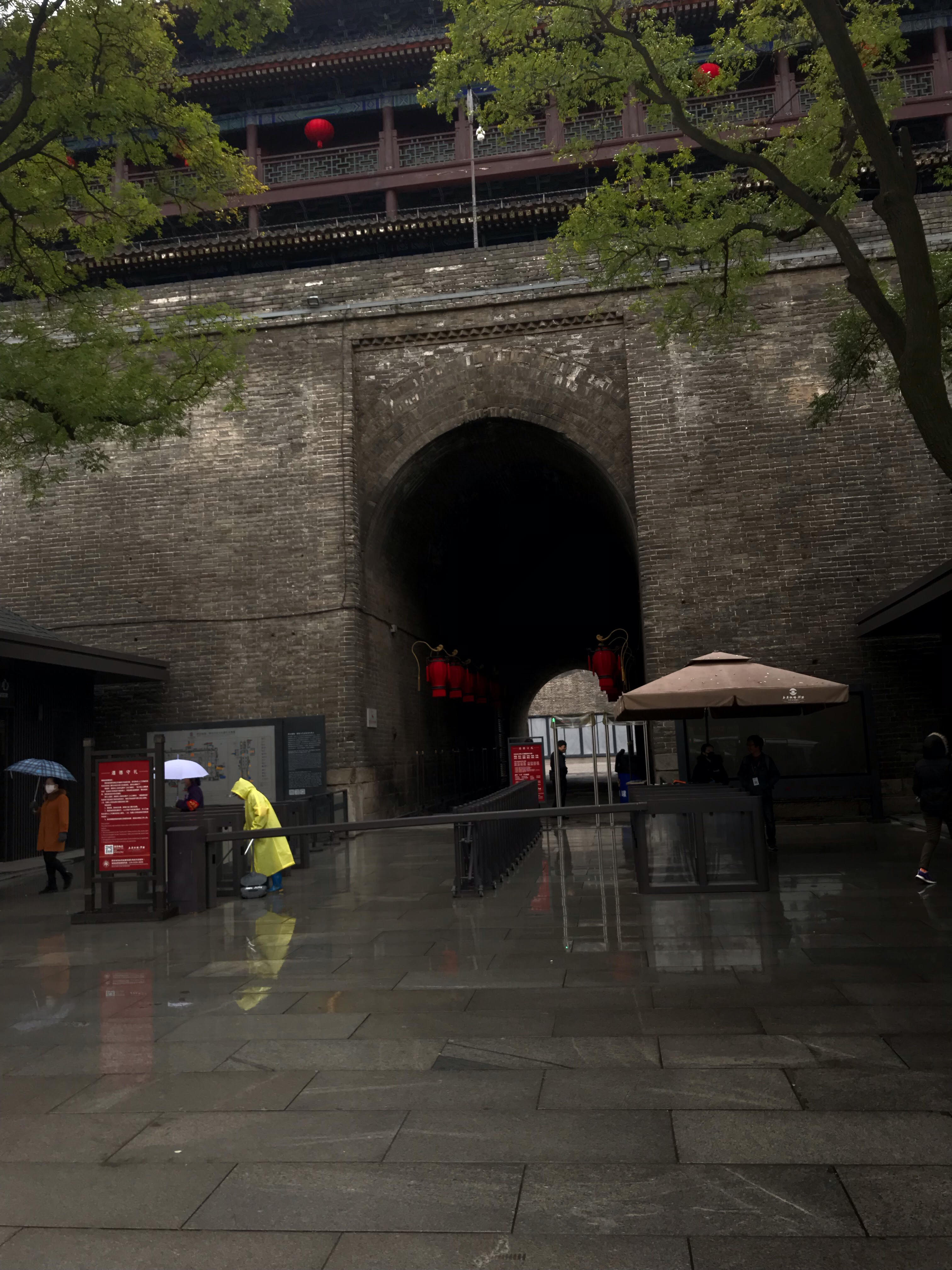
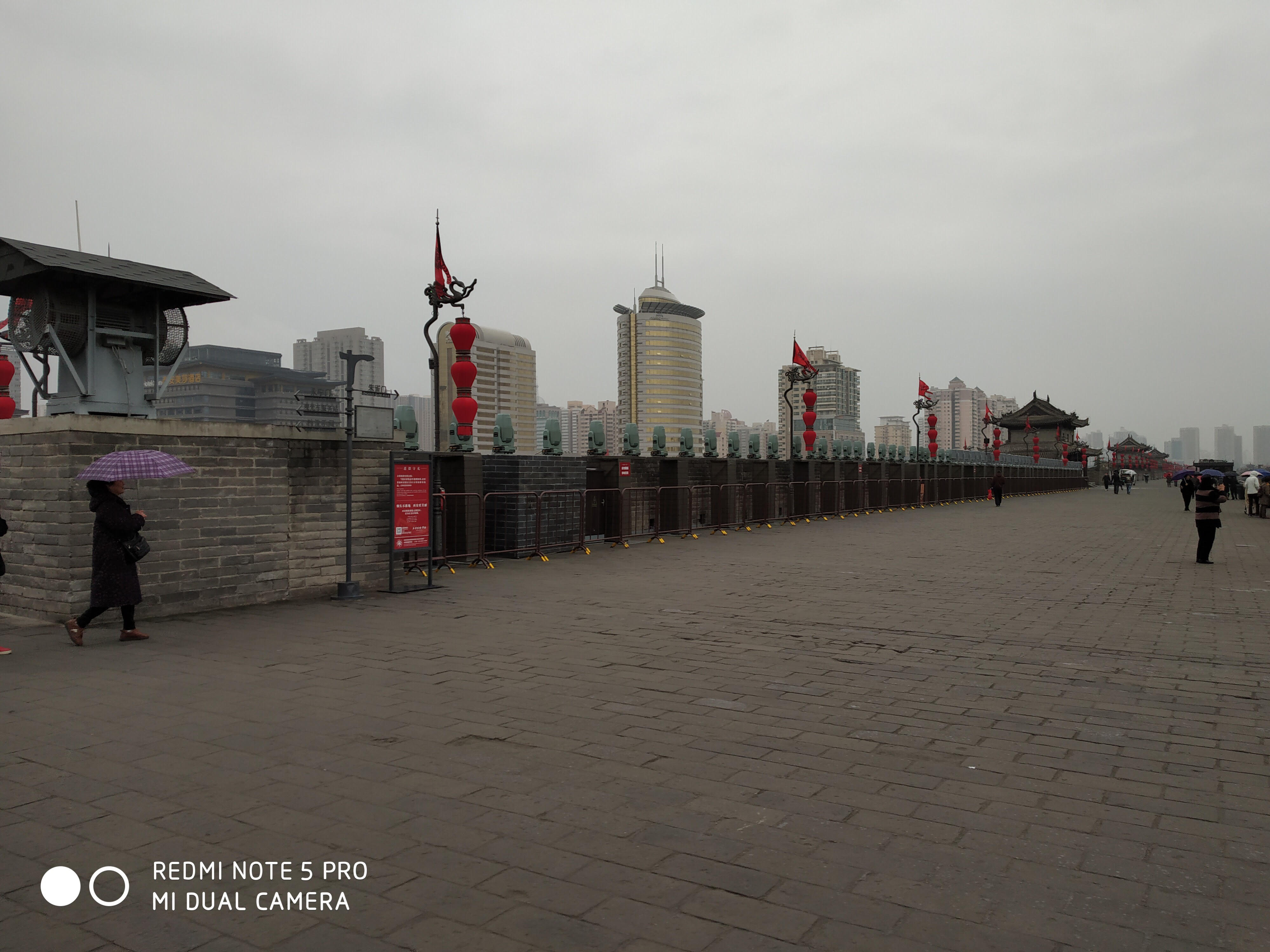
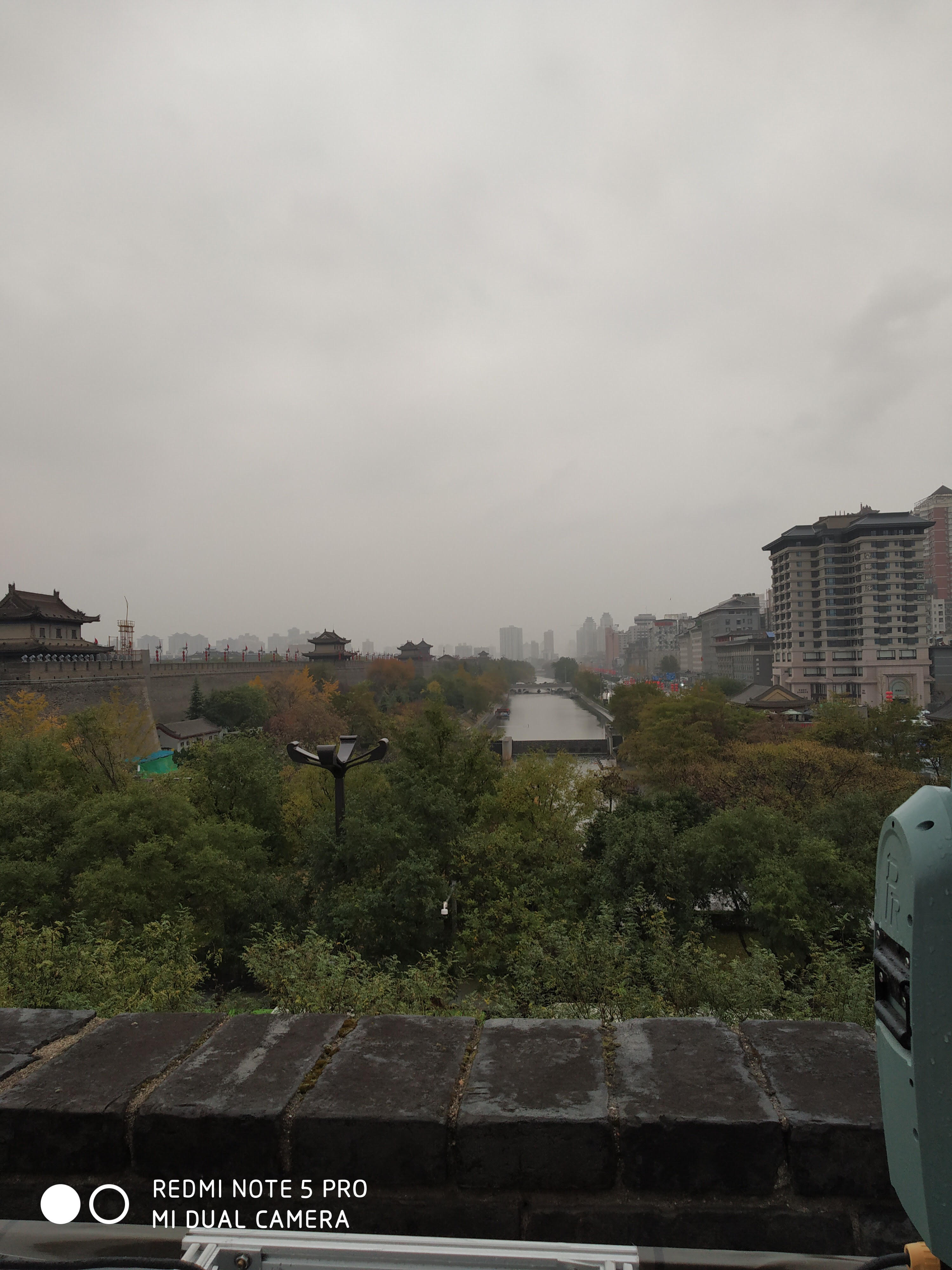
Impressive, it certainly is. So wide that bicycles are kept for hire and one can take bicycle tours of the complete Wall, which may take 3-4 hours at a leisurely pace. Looking to the rains & biting cold, we did not undertake this adventure. Our guide explained that every year, a marathon takes place on the Wall too. Wow! That must be exciting.
Originally built during the Tang dynasty, portions have been built, re-built, renovated over the years and what remains today is primarily the Ming Wall with the last restoration having been done in 1983. Of the 4 gates, the South Gate is the most famous one with state ceremonies being held in the South Gate square. Each gate has three towers – The outer one called the drawbridge tower was used to lower and raise the drawbridge across the moat. Today, the drawbridge itself is there only on the Southern gate. The next tower, with small windows was known as the Arrow Tower or Archery Tower from which soldiers defended the city along with the soldiers in the sentry posts on the 98 ramparts of the Wall itself. Third tower was the entrance to the city and this also had soldiers and ammunition as the second line of defence. The second and third towers are connected through the Wall and even from the ground level within, slopes have been created up to the Wall to facilitate movement of horsemen.
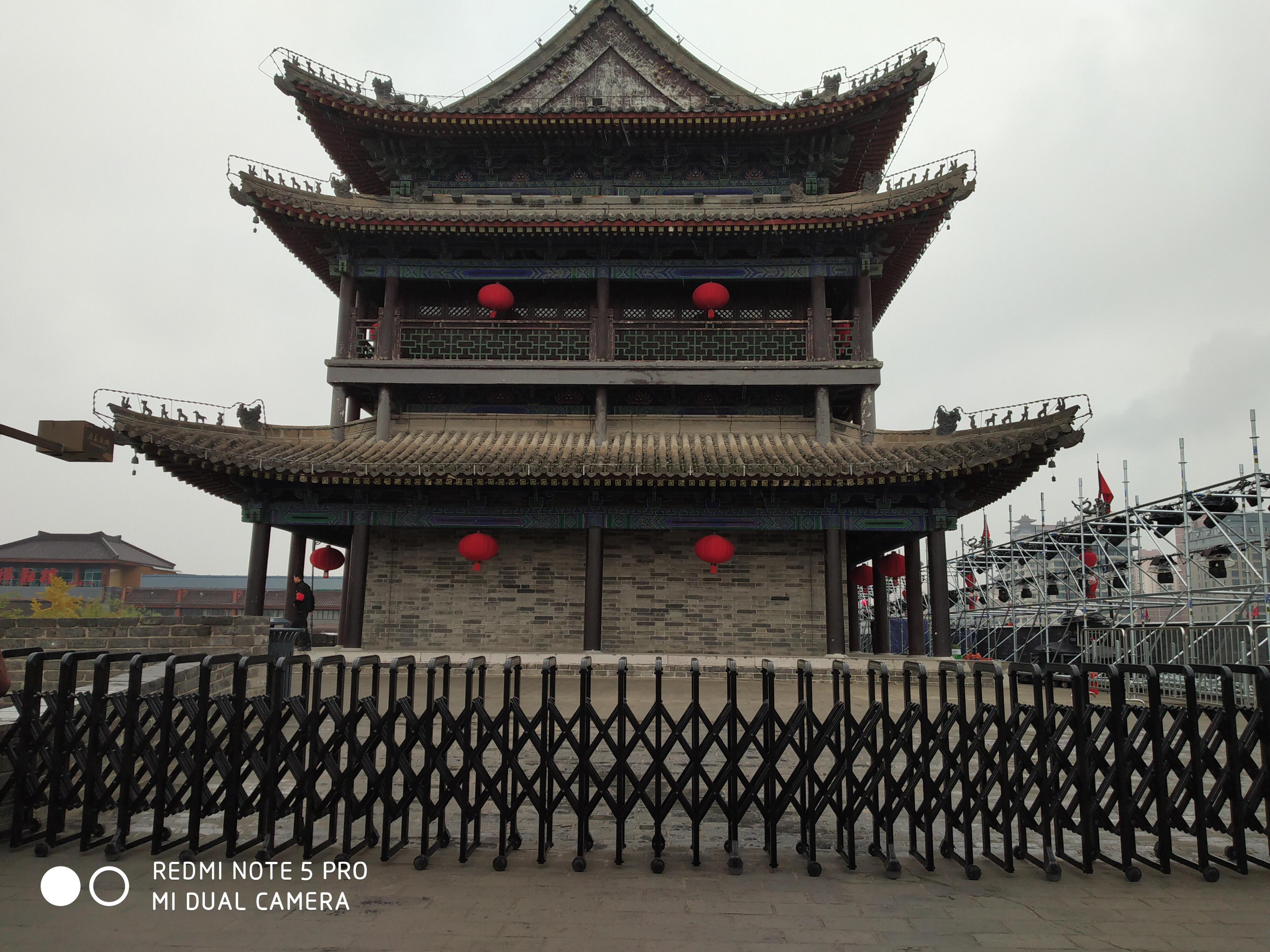
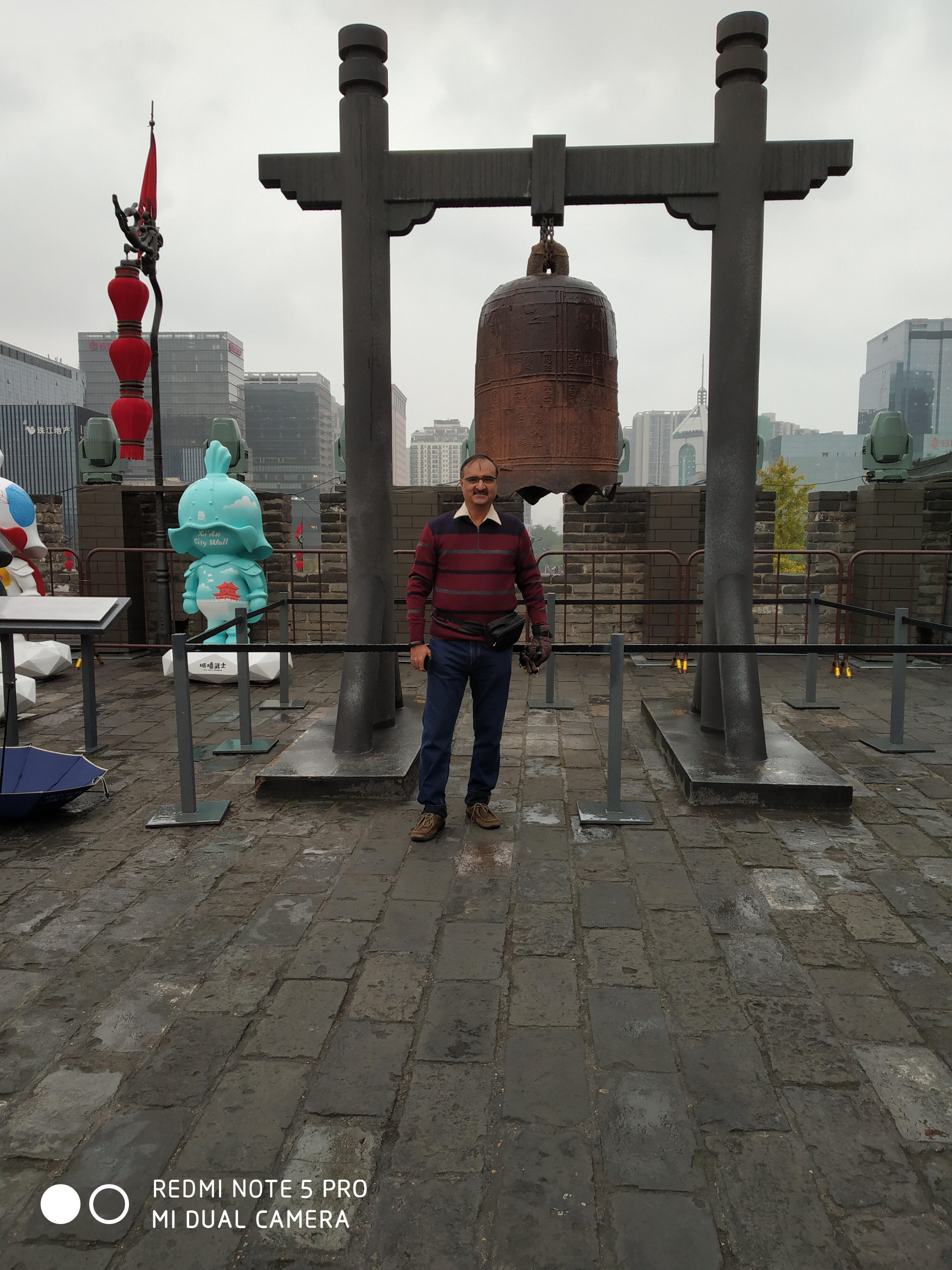
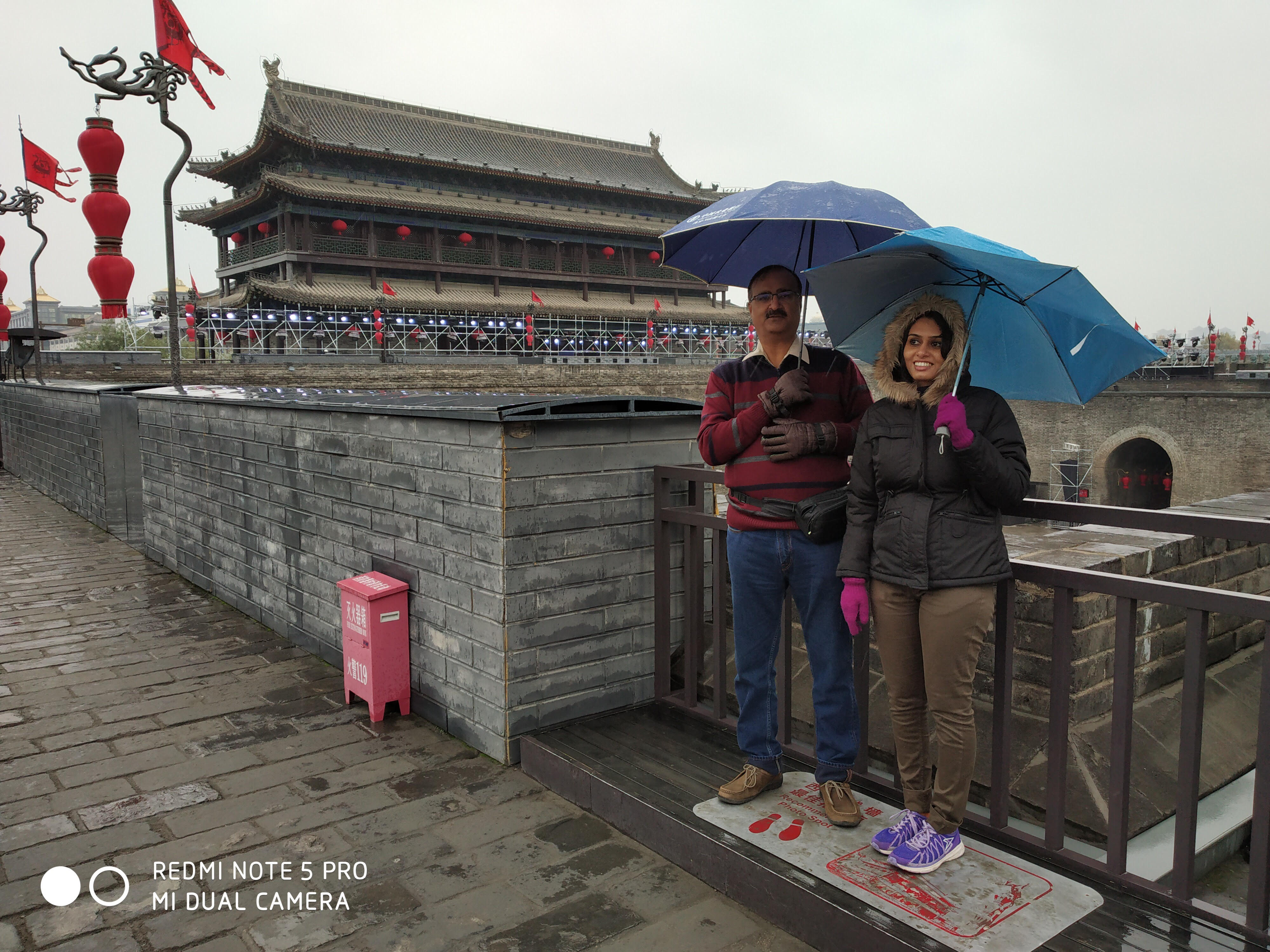
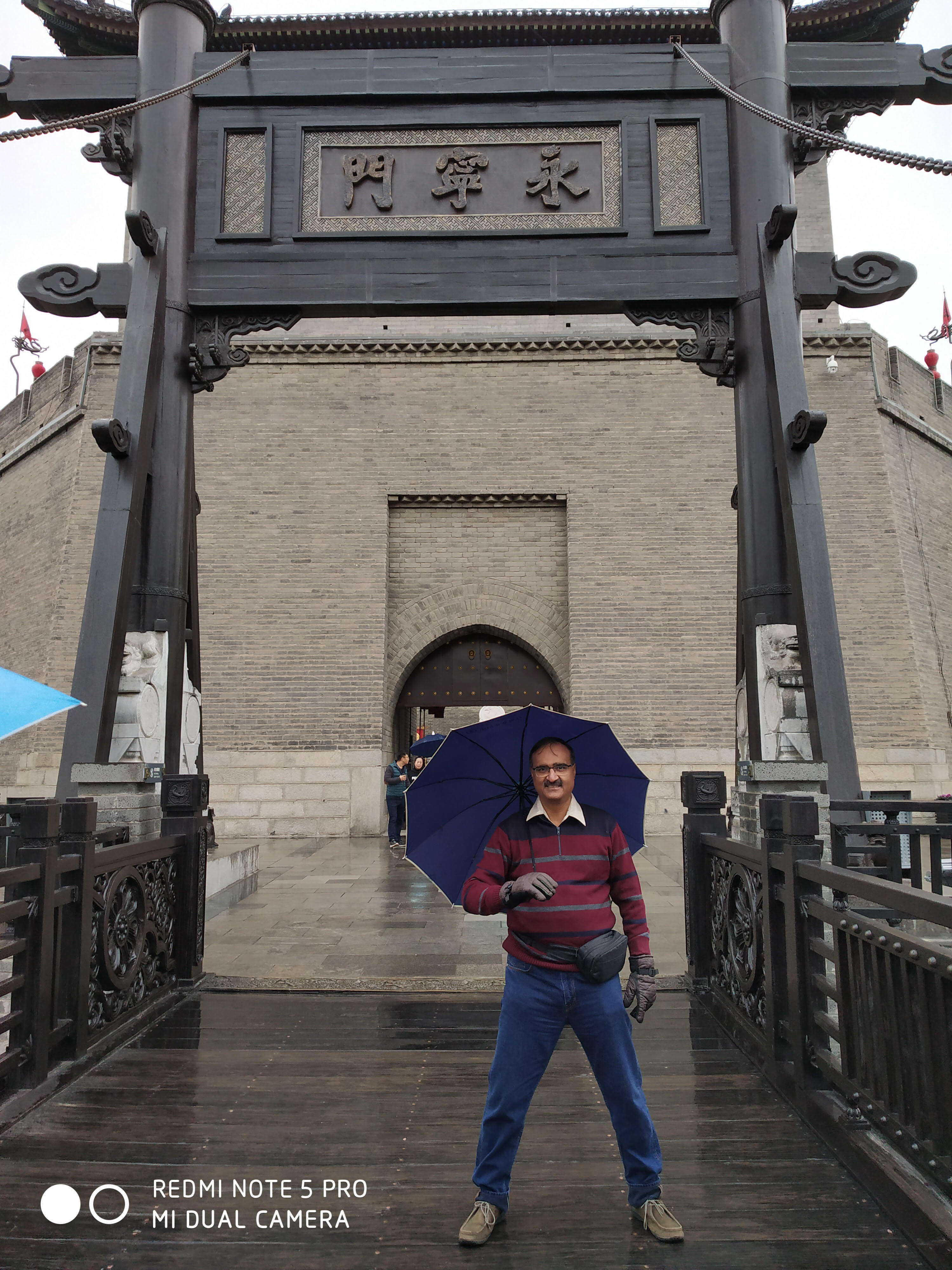
Of the 98 sentry towers on the Wall, only a few remain. These are two-storey structures and we were told that that distance between two sentry posts was 120 meters and this was built keeping in mind that an arrow shot from the Wall diagonally could cover 60 meters. So, a single spot can be covered from two adjacent sentry posts. We were shivering now as the rain increased in intensity and darkness was setting in. As we climbed down the Wall and exited through the drawbridge on the South Gate, we could not help admiring the defence strategy of the ancient Chinese.
Discover more from BalasBroadcast
Subscribe to get the latest posts sent to your email.